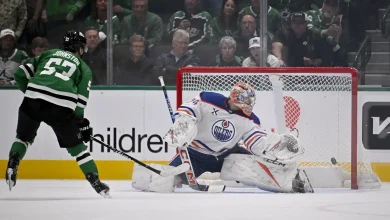Far from its colourful mayoral past, Montreal gives election candidates a collective yawn

Open this photo in gallery:
Montrealers will elect their new mayor on Nov. 2.Graham Hughes/The Canadian Press
Election day 1944 was just like any other in Montreal: rival candidates hired teams of thugs to smash windows and fire pistols at each other (17 men suffered bullet wounds), while “telegraphers” impersonated dead voters at the ballot box.
When the glass had been swept up and the results were tallied, the enormous, swaggering Mr. Montreal, Camillien Houde, had been re-elected, mere months after completing a four-year stint in a prison camp for urging French-Canadians to dodge military service. Dressed in spats, with a pearl-grey vest and an ascot tie under his morning coat, he twirled his Malacca cane all the way to City Hall.
Such colourful personalities and electoral hijinks were once the norm in Montreal politics. Not anymore. This mayoral campaign, culminating with Sunday’s vote, is by common consensus the dullest in memory. The candidates have been called “beige.” There is no dominant issue to get the pulse racing. Until recently, “undecided” led in the polls.
The leading contenders are Luc Rabouin, a bespectacled technocrat for the left-leaning Projet Montréal, and Soraya Martinez Ferrada, a former minister of tourism under Justin Trudeau’s Liberals and standard-bearer for the more centrist Ensemble Montréal.
Open this photo in gallery:
Soraya Martinez Ferrada is running with Ensemble Montréal.Christinne Muschi/The Canadian Press
Open this photo in gallery:
Luc Rabouin is the candidate for Projet Montréal.Christinne Muschi/The Canadian Press
It is hardly a clash of the titans, said Daniel Sanger, a former Projet staffer and author of Saving the City, a 2021 chronicle of the party’s rise to power. Mr. Rabouin is “not inspiring – his big idea was reserved bus lanes,” said Mr. Sanger. “If Projet is able to squeak back into power, it will be largely because Soraya has been unable to generate any enthusiasm.” Her distinguishing policy is a slight skepticism toward the bike lanes Mr. Rabouin favours.
The lack of buzz around Montreal’s prospective mayors is a dramatic departure for a city that has often been led by larger-than-life characters with grand, not to say grandiose, ambitions.
A butcher’s boy who rose from destitution in east-end Montreal, Houde was “a man of surpassing ugliness and legendary charm,” wrote to the late journalist William Weintraub in his book City Unique, who launched Canada’s largest-ever public works campaign during the Great Depression, adorning the city with dozens of handsome Art Deco police stations, fire halls, public markets, park chalets and public toilets, many of which still stand. Thirty cars were required to carry the flowers mourners sent to his public funeral in 1958, which some 100,000 people attended.
Some of the eccentrics who served as Montreal mayor were seen more as clownish than charming. Sarto Fournier’s brief tenure in the late 1950s is perhaps best remembered for the time he had his dog sign City Hall’s guest book with its paw. The enduring image of Denis Coderre’s 2013-2017 mayoralty is of him jackhammering the concrete base of a Canada Post community mailbox in protest, dressed in an incongruous orange vest and white construction helmet.
Open this photo in gallery:
Montreal mayor Camillien Houde, left of centre in this 1930 photo with Sir Vere Brabazon Ponsonby, ninth Earl of Bessborough, was re-elected in 1944 just months after completing a four-year stint in a prison camp.McCord Museum
Other Montreal mayors have been notable for their ethical faults. Gérald Tremblay resigned under a cloud in 2012 after allegations that he was aware of a Mafia-linked party financing scheme. (He denied the allegations.) Mr. Tremblay’s successor, the interim mayor Michael Applebaum, was arrested while in office and later convicted of corruption-related charges. He was sentenced to 12 months in prison.
One big personality marked the city more than any other. From the 1950s to the 1980s Montreal was led almost without interruption by Jean Drapeau, who came to power vowing to clean up the city and ended up reshaping it. His war on vice led to such bizarre and draconian gestures as banning pinball machines and clear-cutting trees from Mount Royal to reduce cover for cruising gay men, leaving the mountain with a glaring bald spot.
His Ozymandian undertakings included building the Metro, bringing Montreal a major-league baseball team, creating Expo 67 and hosting the 1976 Olympics, the latter of which was a financial disaster that turned mayors off big projects for generations. The empty science-fiction contraption of Olympic Stadium looms in the city’s east end to warn his successors against hubris.
Other factors have lowered the sights of city politicians. The outgoing Valérie Plante made her mark with a sunny disposition and a program of bike lanes and pedestrian zones, but the philosophy of her party, the ascendant Projet Montréal, is to make “a blizzard of small gestures,” believing they are more likely to improve people’s lives, said Mr. Sanger.
Montreal mayor calls for homelessness minister as Legault eyes fall cabinet shuffle
A decentralized city government that accords more power to the city’s 19 boroughs, along with strained public finances, have also reduced the stakes of this election. Who gets elected mayor simply matters less than it might otherwise, Mr. Sanger argued.
Even so, many people within the city’s urbanist left pleaded with former Plateau-Mont-Royal borough mayor Luc Ferrandez to run for the top job this year. He transformed his neighbourhood between 2009 and 2019 by prioritizing cyclists and pedestrians over drivers, expanding sidewalks, closing parks to cars, and making many streets one way. His strong vision and sharp-elbowed style were in the mould of Montreal mayors of the past.
But Mr. Ferrandez declined to run because the issues facing the city do not lend themselves to exciting initiatives, he said in a recent interview. Housing and homelessness are Montreal’s biggest challenges today, both of which require huge amounts of federal and provincial funding and little chance of glory.
The heroic era of Montreal mayors may be over. Mr. Drapeau and his successor Jean Doré took such big swings because Montreal was in need of them. Despite its metropolitan trappings, the city was plagued by grinding urban poverty and dysfunction.
They were “trying to pull a people up from the bottom,” said Mr. Ferrandez. “It wasn’t a normal city.”
Today, Montreal is more or less a normal city. Its problems are real but shared by cities across North America. It is a “sign of maturity” that both candidates have identified the unglamorous issues of housing as a top priority, rather than quixotic schemes like bringing the Expos back or building a shiny downtown stadium, argued Mr. Ferrandez.
“Martinez and Rabouin don’t have that personality,” he said. “They aren’t heroes of a cause, they’re administrators.”





